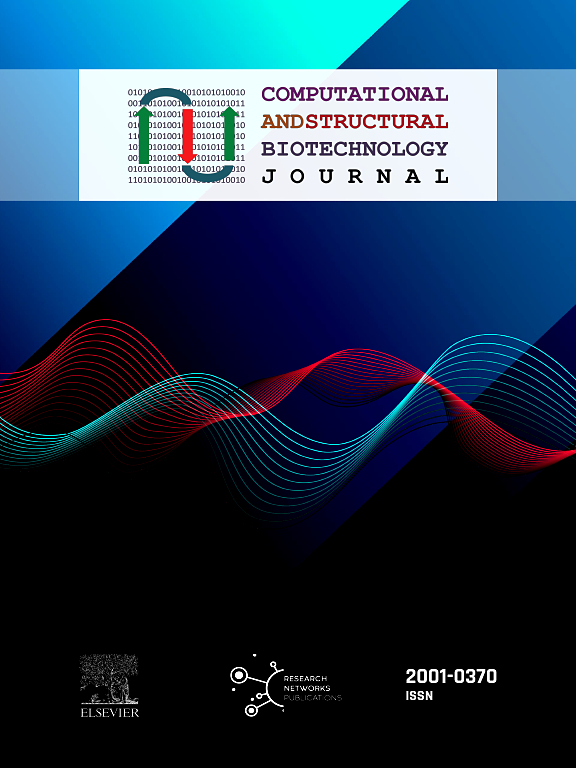From homogeneity to heterogeneity: Refining stochastic simulations of gene regulation
IF 4.4
2区 生物学
Q2 BIOCHEMISTRY & MOLECULAR BIOLOGY
Computational and structural biotechnology journal
Pub Date : 2025-01-01
DOI:10.1016/j.csbj.2025.01.004
引用次数: 0
Abstract
Cellular processes are intricately controlled through gene regulation, which is significantly influenced by intrinsic noise due to the small number of molecules involved. The Gillespie algorithm, a widely used stochastic simulation method, is pervasively employed to model these systems. However, this algorithm typically assumes that DNA is homogeneously distributed throughout the nucleus, which is not realistic. In this study, we evaluated whether stochastic simulations based on the assumption of spatial homogeneity can accurately capture the dynamics of gene regulation. Our findings indicate that when transcription factors diffuse slowly, these simulations fail to accurately capture gene expression, highlighting the necessity to account for spatial heterogeneity. However, incorporating spatial heterogeneity considerably increases computational time. To address this, we explored various stochastic quasi-steady-state approximations (QSSAs) that simplify the model and reduce simulation time. While both the stochastic total quasi-steady state approximation (stQSSA) and the stochastic low-state quasi-steady-state approximation (slQSSA) reduced simulation time, only the slQSSA provided an accurate model reduction. Our study underscores the importance of utilizing appropriate methods for efficient and accurate stochastic simulations of gene regulatory dynamics, especially when incorporating spatial heterogeneity.

求助全文
约1分钟内获得全文
求助全文
来源期刊

Computational and structural biotechnology journal
Biochemistry, Genetics and Molecular Biology-Biophysics
CiteScore
9.30
自引率
3.30%
发文量
540
审稿时长
6 weeks
期刊介绍:
Computational and Structural Biotechnology Journal (CSBJ) is an online gold open access journal publishing research articles and reviews after full peer review. All articles are published, without barriers to access, immediately upon acceptance. The journal places a strong emphasis on functional and mechanistic understanding of how molecular components in a biological process work together through the application of computational methods. Structural data may provide such insights, but they are not a pre-requisite for publication in the journal. Specific areas of interest include, but are not limited to:
Structure and function of proteins, nucleic acids and other macromolecules
Structure and function of multi-component complexes
Protein folding, processing and degradation
Enzymology
Computational and structural studies of plant systems
Microbial Informatics
Genomics
Proteomics
Metabolomics
Algorithms and Hypothesis in Bioinformatics
Mathematical and Theoretical Biology
Computational Chemistry and Drug Discovery
Microscopy and Molecular Imaging
Nanotechnology
Systems and Synthetic Biology
 求助内容:
求助内容: 应助结果提醒方式:
应助结果提醒方式:


